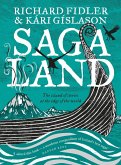Through careful examination of significant events like the California Gold Rush of 1848 and the Klondike Gold Rush of 1896, readers discover how these pivotal moments catalyzed massive social changes and infrastructure development that extended far beyond the initial quest for wealth. The narrative uniquely combines scientific rigor with compelling storytelling, making complex concepts accessible through practical examples and real-world applications.
Drawing from an impressive array of primary sources, including prospectors' journals and government records, the book reveals how gold rushes transformed landscapes and communities across six continents. Particularly noteworthy is its treatment of placer mining and hydraulic mining techniques, demonstrating how technological advancement in gold extraction paralleled societal development.
What sets this work apart is its interdisciplinary approach, bridging the gaps between geology, economics, and anthropology. The book progresses chronologically through major gold rushes while maintaining thematic connections to modern challenges in resource management and financial systems. This comprehensive examination serves both academic and general audiences, offering valuable insights into how this precious metal continues to influence contemporary society, from investment practices to industrial applications.
Dieser Download kann aus rechtlichen Gründen nur mit Rechnungsadresse in A, B, BG, CY, CZ, D, DK, EW, E, FIN, F, GR, H, IRL, I, LT, L, LR, M, NL, PL, P, R, S, SLO, SK ausgeliefert werden.









